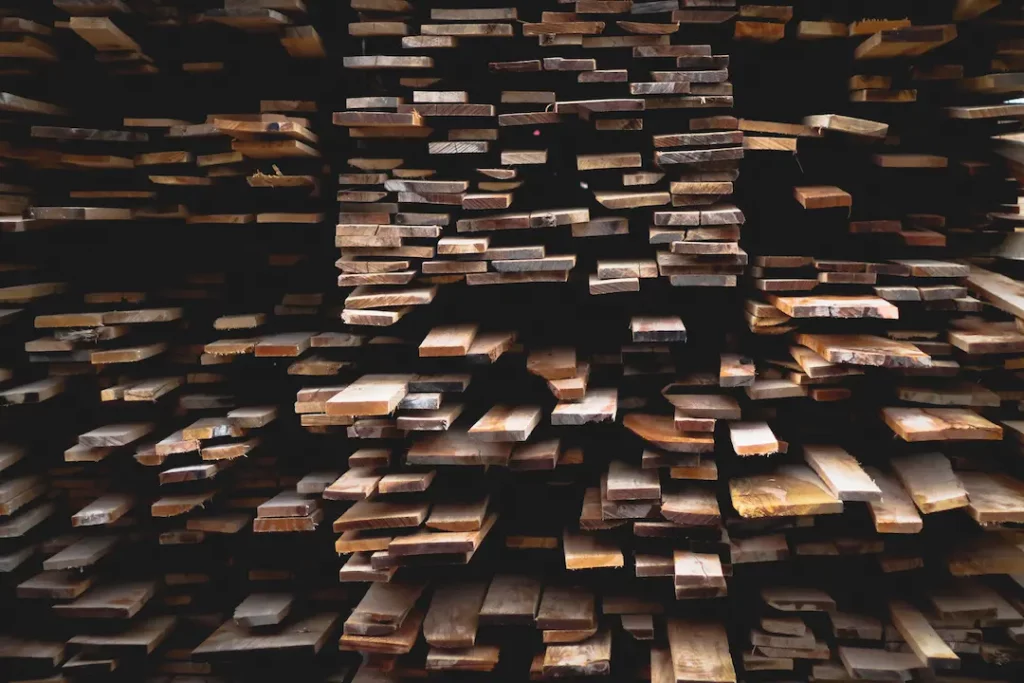When you have a project that involves wood, you want to be sure you are using the right type. Many projects, both indoors and outdoors, can benefit from using pressure-treated wood. As we answer the question of what is pressure-treated wood, we’ll also look at how it is made, the different types, as well as the benefits.
How is Pressure-Treated Wood Made?
Pressure-treated wood and lumber have gone through a special process to make it more durable and less prone to decay, mold, water damage, and insect infestation. Some different treatments can also make the wood fire retardant.
Types of Pressure-Treated Wood
When you’re looking at the question of what is pressure-treated wood, you need to be aware of the different types.
Pressure-treated wood is broken up into different types based on the amount of preservative the wood retains after it is treated. This retention level is measured in pounds of chemical per cubic foot of wood (PCF). The longer the wood is in the pressure chamber, the greater the content of chemical preservatives that are forced into and retained in the wood.
The different types of pressure-treated wood include:
Above-Ground
Above-ground pressure-treated wood is wood that can be used in applications that are easily replaced or maintained. It can also be at least 6 inches above the ground and have good air circulation and drainage.
Ground Contact
Ground contact pressure-treated wood is anything within 6 inches of the ground in contact with the ground. It has twice the level of chemical retention and protection than above-ground treated wood. It is best used for projects where wood is difficult to maintain or replace. Ground contact lumber is good for raised garden beds.
In-Ground Contact for Critical Use
Pressure-treated wood that is used for in-ground or critical use has a greater retention level than timber that is used for above or ground contact. This type of pressure-treated wood is best used in places where there is a greater chance of deterioration or environmental exposure.
Marine-Grade
Marine-grade wood is treated with water-based preservatives so that it can be immersed in saltwater. It has higher retention levels compared to other types of pressure-treated wood.
How is Pressure-Treated Wood Best Used?
Pressure-treated wood can be used for both residential indoor and outdoor use as well as in construction.
Residential Indoor & Outdoor Use
Wood that is treated with water-borne preservatives such as CCA-treated wood is good for general use inside and outside homes. It can be used for:
- Decks
- Fences
- Other building structures
- Accessibility Ramps
- Other outdoor structures that are exposed to the elements
At Capitol City Lumber, we can help you determine what type of wood is best for the project you are working on.
Wood Construction
Wood treated with creosote preservatives is used in the construction of bridges, docks, and guardrails. Oil-based preservatives are used to treat lumber that is used for things like utility poles and cross-arms.
When you’re choosing pressure-treated wood for any type of project, you want to know if it’s going to be used above ground or if it will be in contact with the ground. For any above-ground projects, the wood should be at least 6 inches from the ground.
Is Pressure-Treated Wood Safe?
One of the big things that people want to know when using pressure-treated wood is if it’s safe. Pressure-treated wood is safe to use for any project. Before 2003, chromate copper arsenate (CCA) was used on pressure-treated wood. This is a chemical that contains some poisonous arsenic. Because some small amounts of arsenic can leach out of treated wood, the EPA decided it would be best to stop using CCA and use other types of preservatives instead.
Are you Looking to Buy Pressure Treated Wood?
Capitol City Lumber is your source for pressure-treated wood in Raleigh and surrounding areas. You can count on Capitol City Lumber to offer only the highest quality products at the best prices. We have a team of experts on hand who can answer your questions and can guide you in the right direction if you’re not sure what type of wood is best for your project.
Call us today at 919.832.6492 or reach out to us online so that we can help!



